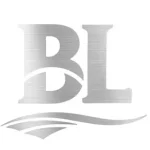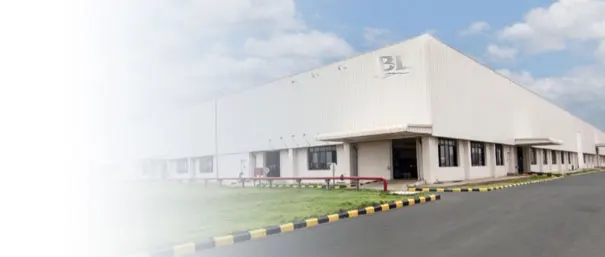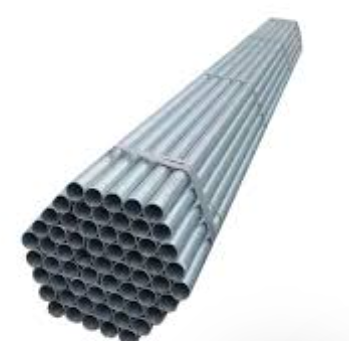Threaded galvanized pipes remain a cornerstone in plumbing, fire protection, light industrial process lines, and HVAC condensate systems because they combine the mechanical convenience of threaded joints with the corrosion resistance of zinc coatings. However, achieving truly leak‑free performance depends on rigorous surface preparation, correct thread engagement, compatible sealants, and careful torque control. This guide consolidates field‑proven practices, dimensional references, and compatibility notes to help engineers, contractors, and maintenance teams execute reliable installations while minimizing rework and lifecycle cost.


Looking for certified threaded galvanized pipe with stable lead times? BaoLi Iron & Steel Co., Ltd. manufactures and supplies customized diameters, wall thicknesses, and thread finishes with strict quality control and global logistics support.
Explore products:
galvanized steel pipes and
galvanized steel pipe.
Why threaded galvanized pipes remain relevant
Threaded systems are ideal for small‑ to medium‑diameter lines where welding access is limited, hot‑work permits are constrained, or rapid on‑site modifications are expected. Galvanization provides a sacrificial zinc layer that protects steel in mildly to moderately corrosive environments, extending service life in utility rooms, roof drains, agriculture, and light industrial utilities. When paired with compatible malleable iron or forged steel fittings, threaded connections can meet mechanical and sealing requirements without specialized welding crews.
The most common thread standard is NPT (ASME B1.20.1) in North America and BSPT/BSPP in many other regions. Misalignment between standards is a frequent cause of leakage, galling, or thread strip‑out. Verifying thread system compatibility before installation prevents chronic weeping and costly downtime.
Material and coating considerations
- Base steel: Select schedules and grades per pressure, temperature, and mechanical loads. Schedule 40 is common; Schedule 80 for higher pressure or thread engagement reserve.
- Zinc coating: Hot‑dip galvanizing typically offers 40–100+ µm coating thickness depending on specification. Thicker coatings improve durability but can affect thread profile tolerance if threads are cut after galvanizing.
- Threads: For best sealing, threads are usually cut to standard taper before galvanizing or are cut and then zinc‑rich coated. Over‑thick zinc on threads can distort flank engagement; clean, chase, or re‑tap as needed.
- Fittings: Use galvanized or zinc‑plated malleable iron/forged steel fittings with matching thread form. Avoid mixing NPT and BSP unless a verified adapter is used.
Tip: For coastal or chemically aggressive atmospheres, consider thicker zinc, duplex systems (zinc + paint), or stainless transitions at the most exposed terminations. BaoLi can advise on coating strategies to match your environment and lifecycle targets.
Dimensional reference: NPT taper and recommended engagement
NPT threads have a 1 in 16 taper (3/4 in per foot). Proper engagement typically falls within 3–5 turns hand‑tight plus 1–2 wrench turns, depending on size, thread quality, and sealant. Excess torque can split fittings or crush thin‑wall pipe ends, while insufficient torque creates micro‑channels for leaks.
| Nominal Size | Common Schedule | Hand‑tight Turns | Wrench Turns | Notes |
|---|---|---|---|---|
| 1/2 in | Sch 40 / Sch 80 | 3–4 | 1–2 | Check for bottoming; avoid over‑torque on small fittings. |
| 3/4 in | Sch 40 / Sch 80 | 3–4 | 1–2 | Most common for utility water and air. |
| 1 in | Sch 40 / Sch 80 | 3–4 | 1–2 | Use two proper wrenches to avoid torsional stress. |
| 1‑1/2 in | Sch 40 / Sch 80 | 3–4 | 1–2 | Consider sealant with higher gap‑filling capability. |
Values are typical guidelines; always follow the fitting manufacturer’s recommendations and applicable codes.
Best practices for leak‑free installations
- Inspect and prepare threads: Ensure clean, uniform threads with no burrs or plating buildup. Use a thread gauge where critical. Lightly wire‑brush galvanized threads to remove loose spangles; avoid removing the protective zinc layer.
- Choose the right sealant: PTFE tape (density ≥ 0.7 g/cm³) or anaerobic pipe thread sealant rated for zinc‑coated steel. For vibration or thermal cycling, pastes with PTFE or anaerobic chemistry often outperform tape alone.
- Apply sealant correctly: Wrap PTFE tape in the direction of tightening, 2–3 layers for small sizes (1/2–1 in), 3–4 for larger sizes. If using liquid/paste, apply an even, thin coat on male threads only; keep first thread clean to avoid contamination inside the system.
- Control torque and alignment: Start joints by hand to prevent cross‑threading. Use two wrenches—one to hold the fitting steady and one to turn the pipe. Tighten gradually; stop if you feel sudden yielding.
- Support and stress relief: Install hangers to code. Avoid side‑loads that distort threads. Use unions for disassembly points and expansion joints in long runs subject to temperature change.
- Hydrostatic or pneumatic testing: Pressurize in stages, check for weeping at 25–50% test pressure, then proceed to full test. Mark suspect joints and retighten or reseal as needed.
- Corrosion management: After threading/cutting, repair coating damage with zinc‑rich paint per manufacturer’s DFT. Keep dissimilar metals isolated or use dielectric unions where needed.
Compatibility with fittings and valves
Use galvanized malleable iron or forged steel fittings that match the thread standard and pressure rating of your pipe. Avoid mixing BSPT with NPT; although both are tapered, flank angles differ (55° vs 60°), leading to poor contact and sealant extrusion. For valves, select bodies and end connections rated for the media, pressure, and temperature; brass or bronze valves can be used with galvanized pipe provided thread forms match and galvanic concerns are mitigated.
| Fitting Type | Material | Thread Standard | Use Case |
|---|---|---|---|
| Elbows/Tees/Couplings | Galvanized malleable iron | NPT or BSPT (match system) | General water, air, low‑pressure process. |
| Unions | Galvanized steel/iron | NPT/BSPT | Disassembly points and alignment correction. |
| Check/Gate/Ball Valves | Brass/Bronze/Forged steel | NPT/BSP | Flow control and isolation; confirm media compatibility. |
For fire protection (where permitted), verify that pipe, fittings, and sealants meet relevant listings and standards (e.g., NFPA, UL/FM) and jurisdictional requirements.
Sealant selection matrix
Select a sealant that matches your fluid, temperature, and vibration profile:
| Sealant Type | Typical Range | Media Compatibility | Notes |
|---|---|---|---|
| PTFE Tape | ‑200 to 200°C (varies) | Water, air, many chemicals | Quick, clean; may require paste backup on larger sizes. |
| PTFE Paste | ‑50 to 200°C | Water, air, oils | Good gap filling; reduces galling on zinc‑coated threads. |
| Anaerobic Sealant | ‑55 to 150°C (grade dependent) | Hydrocarbons, water, gases | Cures without oxygen; excellent vibration resistance. |
Common causes of leaks and how to prevent them
- Cross‑threading: Always start by hand; if resistance is felt early, back off and realign.
- Over‑torque: Leads to cracked fittings and deformed threads; follow recommended turns and use calibrated feel or torque indicators where feasible.
- Incompatible threads: Verify NPT vs BSP; never force‑fit.
- Insufficient sealant or improper application: Keep first thread clean; apply even coverage; match sealant to media and temperature.
- Coating debris on threads: Lightly clean; avoid abrasive methods that remove zinc and invite corrosion.
- Thermal or vibration cycling: Use anaerobic sealant or thread lockers designed for pipework; add supports or flexible connectors as needed.
Service environment and media cautions
Galvanized steel performs well in potable water, air, and many non‑aggressive fluids. Avoid exposure to strongly acidic or alkaline solutions that can rapidly consume zinc. For hot water systems above about 60–65°C, consider accelerated zinc consumption and plan for inspection intervals. In closed‑loop hydronic systems, maintain appropriate water chemistry to prevent both zinc and base steel attack. For compressed air, include adequate filtration and condensate management to reduce internal corrosion.
Where stringent corrosion or hygiene is required, combine galvanized lines with stainless steel transitions at critical points or specify upgraded materials. BaoLi’s engineering team can recommend material pairings and coatings tailored to your duty cycle and compliance targets.
Installation workflow checklist
Use this concise sequence to reduce rework:
- Verify drawings, thread standard (NPT/BSP), pressure class, and media.
- Inspect pipe ends; chase threads if needed; touch up zinc where cut.
- Dry‑fit complex assemblies; mark wrench flats for final orientation.
- Apply sealant correctly; assemble hand‑tight, then wrench to spec.
- Install supports and unions; ensure no misalignment loads.
- Pressure test in stages; document torque adjustments.
- Final corrosion touch‑ups; label and archive test results.
Quality assurance and sourcing with BaoLi Iron & Steel
BaoLi Iron & Steel Co., Ltd. is a China‑based manufacturer focused on galvanized steel pipes, plates, bars, and coils for global markets. We provide end‑to‑end support—from selection and customization to technical guidance and logistics. Our quality system targets 100% customer satisfaction, with coating thickness verification, thread gauges, and hydrostatic tests available per contract. Whether you require standard lengths or project‑specific cut‑and‑thread services, our team helps you reduce installation risk and total cost of ownership.
For project submittals, we can supply mill test certificates, coating thickness data, and dimensional inspection reports to streamline compliance. Contact us for tailored solutions or review our
galvanized steel pipes catalog for current specifications and availability.
Key takeaways
- Match thread standards (NPT vs BSP) and pressure classes; never mix without adapters.
- Prepare threads, choose compatible sealants, and control torque for reliable sealing.
- Support piping to eliminate side‑loads; consider unions and expansion allowances.
- Protect zinc coatings at cut ends and during assembly; manage corrosive exposures.
- Partner with a quality‑driven supplier like BaoLi to ensure consistent performance and documentation.
Key Specifications
- Standards and grades
- Dimensions and tolerances
- Surface finish
- Certificates (MTC)
Applications
Construction, machinery, energy and general fabrication — match material and finish to the operating environment.



